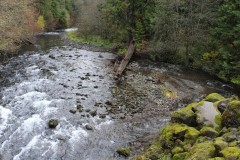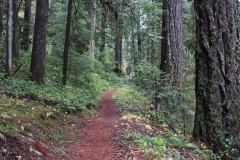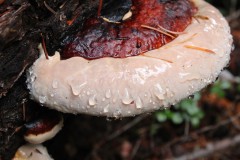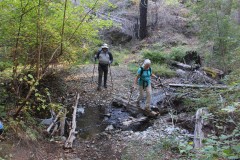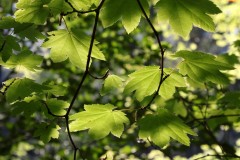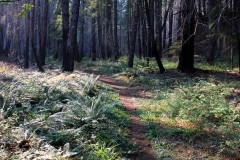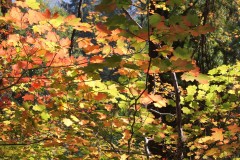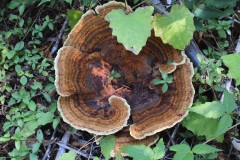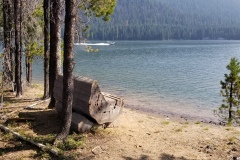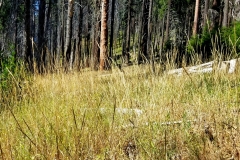Hike Coordinator: Brad Bishop
Narration by Brad Bishop
Well, this one was more unusual than most of my unusual outings.
What was going to be ‘The Powder to Chowder’ hike in celebration of the start of the beginning of this year’s ‘Worst Hike Ever’ took a turn in a direction that I never would have dreamed of. It was a weird coincidence that in 2022 we began on the 1st day of the year and ended on the 365th at North Bank. There was no snow, but it had rained pretty steadily the couple of days before, so I was figuring wet and sloppy. Maybe change the hike to Slop and Soup.
So, there were nine of us ready to send 2022 into the junk heap of time and start celebrating the anticipated 2023 Nirvana that was on the horizon.
We gathered in the Comstock Lot and headed out to the Bucktail Basin. Everyone seemed in good spirits and the trail wasn’t too wet and the temp. was inviting for a brisk walkabout. After about ¾ of a mile I came over a ridge and much to my surprise a small shepherd type dog appeared out of nowhere and started cantering towards me. The first thing I noticed was that it had a weird gait. I thought, poor guy, must have gotten one of his back legs injured. After he (actually she) got closer I realized I was mistaken there was no leg there. As I bent down to pet her, she was kind of whining but didn’t seem distressed. As the rest of the crew came up, they greeted the doggie with Love and Warmth. I peered down the trail expecting to see her owner, but no one was in sight. She seemed to bond with our group and hobbled along up the trail keeping Missy’s dog company. I thought we’d see her owner down the trail.
Well, it was a pretty easy trek until we came upon the steam crossings which were flowing pretty good. So little tripod was still with us but there was no way she would have gotten across without being swept downstream. Remember in Lord of the Rings when they did the dwarf toss? Well, this was dog tossing at its best. After surveying the situation, and the majority of the hike still ahead, Super Ginger Coreena, Missy and Mike decided to take our little stowaway back to civilization.
I was somewhat relieved as I knew some of our top animal lovers had decided to take action and I felt much better about the outcome of the situation.
The rest of our group continued on the journey. It seemed like the part I was most concerned about, Soggy Bottom, was pretty nice actually, not too sloppy AND the sun showed signs of breaking through. As we navigated the last water hazard and hung a right past the barn, we saw a trio coming towards us in the distance. It was the Three Musketeers. First thing I noticed was that little tripod was absent. My mind went through all the worst-case scenarios, but I noticed they had small smiles on their faces. They proceeded to fill me in about how they got back to the parking lot and wondered what was their next step. Coreena was already planning on her game plan about adopting her, but all the while they knew they had to first see if they could reunite the little one back to her family.
After canvassing anyone they could find and turning up no leads, an Oregon Police Officer happened by. He hadn’t heard about any lost dogs, but would check with the caretakers. BINGO! It wasn’t the care taker’s dog, but they knew the owners.
“PIPER”, as it turns out, was with her family and got separated. She had been out there two nights. Her family had gone out looking for her for a couple of days with no luck.
Anyway, it’s always good to have a happy ending. We had some chowder, quiche, cookies, and sparkling cider. We talked about the joys of getting older, and had that warm and fuzzy feeling for maybe saving a little life.
So let us take this attitude into the new year to give a little more love and taking action on our compassion. See you when I see you. Have a great 2023.
Pictures below by Rheo Wheeler

















